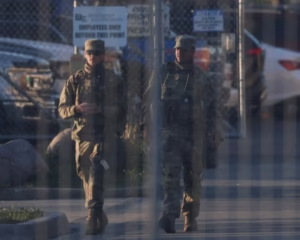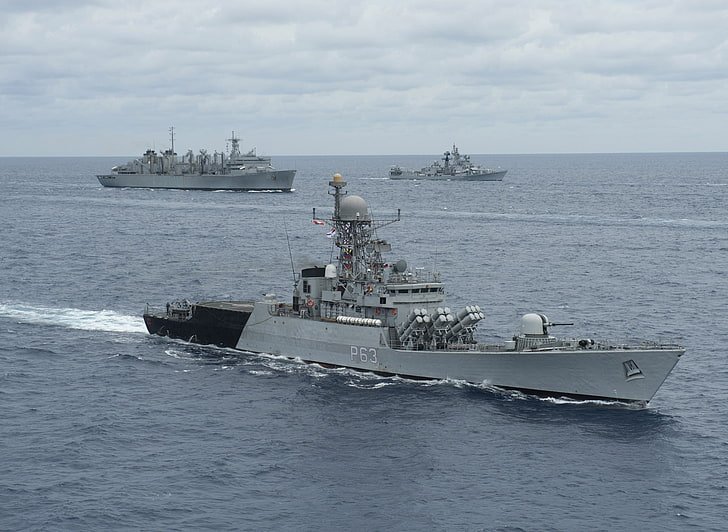The Indian Navy plays a vital role in safeguarding India’s maritime borders and securing its interests across the Indian Ocean Region. As the naval branch of the Indian Armed Forces, it has grown into a powerful blue-water navy capable of projecting strength far beyond the country’s coastline. Its history dates back to 1612, originating from the East India Company’s marine forces. Over centuries, it evolved, becoming the Royal Indian Navy in 1934 during British rule and finally transforming into the Indian Navy after India gained independence in 1947.
The Indian Navy’s primary mission is to defend India’s maritime boundaries and ensure the security of its exclusive economic zone. It also focuses on maintaining freedom of navigation, protecting offshore assets, and safeguarding sea lanes that are crucial for global trade and energy supplies. Apart from defense duties, the Navy supports disaster relief, humanitarian missions, and participates in multinational peacekeeping efforts. Its role in anti-piracy and counter-terrorism operations at sea has become increasingly important, especially given the strategic significance of the Indian Ocean.
Organized under the leadership of the Chief of Naval Staff, the Indian Navy operates through three main commands. The Western Naval Command, headquartered in Mumbai, oversees the western coastline and the Arabian Sea, while the Eastern Naval Command, based in Visakhapatnam, manages operations in the Bay of Bengal and eastern seaboard. The Southern Naval Command in Kochi primarily serves as the Navy’s training hub. Additionally, the Andaman and Nicobar Command is a unified command responsible for the defense of the strategically critical island chains that guard key sea routes.
The fleet of the Indian Navy is diverse and technologically advanced. It includes aircraft carriers, destroyers, frigates, corvettes, submarines, and patrol vessels. Notably, the Navy operates nuclear-powered submarines and ballistic missile submarines, which form the cornerstone of India’s strategic nuclear deterrent. The current operational aircraft carrier, INS Vikramaditya, enhances the Navy’s power projection capabilities, while the recently commissioned INS Vikrant represents India’s efforts to build indigenous carriers. The Navy also employs naval aircraft, helicopters, and unmanned aerial vehicles for surveillance and combat roles, providing a comprehensive maritime defense network.
The Indian Ocean holds immense strategic importance as a major route for global trade and energy shipments. The Indian Navy’s presence in this region ensures security and stability, protecting critical shipping lanes from threats such as piracy and regional conflicts. India leverages its naval capabilities to build strong relationships with neighboring countries and international partners. Joint exercises with navies from the United States, Japan, Australia, France, and others strengthen interoperability and regional cooperation.
In recent years, the Indian Navy has been actively involved in anti-piracy operations, particularly in the Gulf of Aden, where it has played a crucial role in safeguarding commercial vessels from attacks. The Navy’s modernization efforts continue to expand its fleet with state-of-the-art ships, submarines, and weaponry. This ongoing upgrade aims to maintain India’s competitive edge in maritime security and power projection.
The Indian Navy also plays a strategic role during conflicts. It is a key component of India’s defense policy, working closely with the Army and Air Force to secure the country’s borders. The Navy’s nuclear submarine fleet provides a credible second-strike capability, deterring potential adversaries with assured retaliation. In times of tension, such as conflicts with Pakistan or China, the Navy can impose maritime blockades or carry out precision strikes, making it a critical element of India’s military strategy.
Recent geopolitical developments have highlighted the Indian Navy’s readiness to respond decisively. Statements from naval leadership emphasize a strong stance against any threats, reflecting the Navy’s preparedness to protect the nation. The Navy’s capability to conduct operations near hostile shores, including potential strikes on enemy ports, demonstrates its strategic depth. This readiness is supported by rigorous training, intelligence gathering, and advanced technology, ensuring the Navy can act swiftly in defense of national interests.
Beyond military operations, the Indian Navy also contributes to humanitarian efforts. It provides assistance during natural disasters, both within India and in neighboring countries. Naval ships and personnel have been deployed to deliver relief supplies, conduct rescue missions, and rebuild critical infrastructure, showcasing the Navy’s role as a force for peace and stability in the region.
The Indian Navy’s evolution from a colonial maritime force to a modern, powerful navy reflects India’s growing stature on the global stage. Its ability to combine traditional naval warfare with new technology and strategic partnerships makes it a key player in regional and global security. The Navy’s ongoing commitment to protecting India’s maritime interests ensures it remains a crucial pillar of national defense and a vital actor in maintaining peace in the Indian Ocean and beyond.







